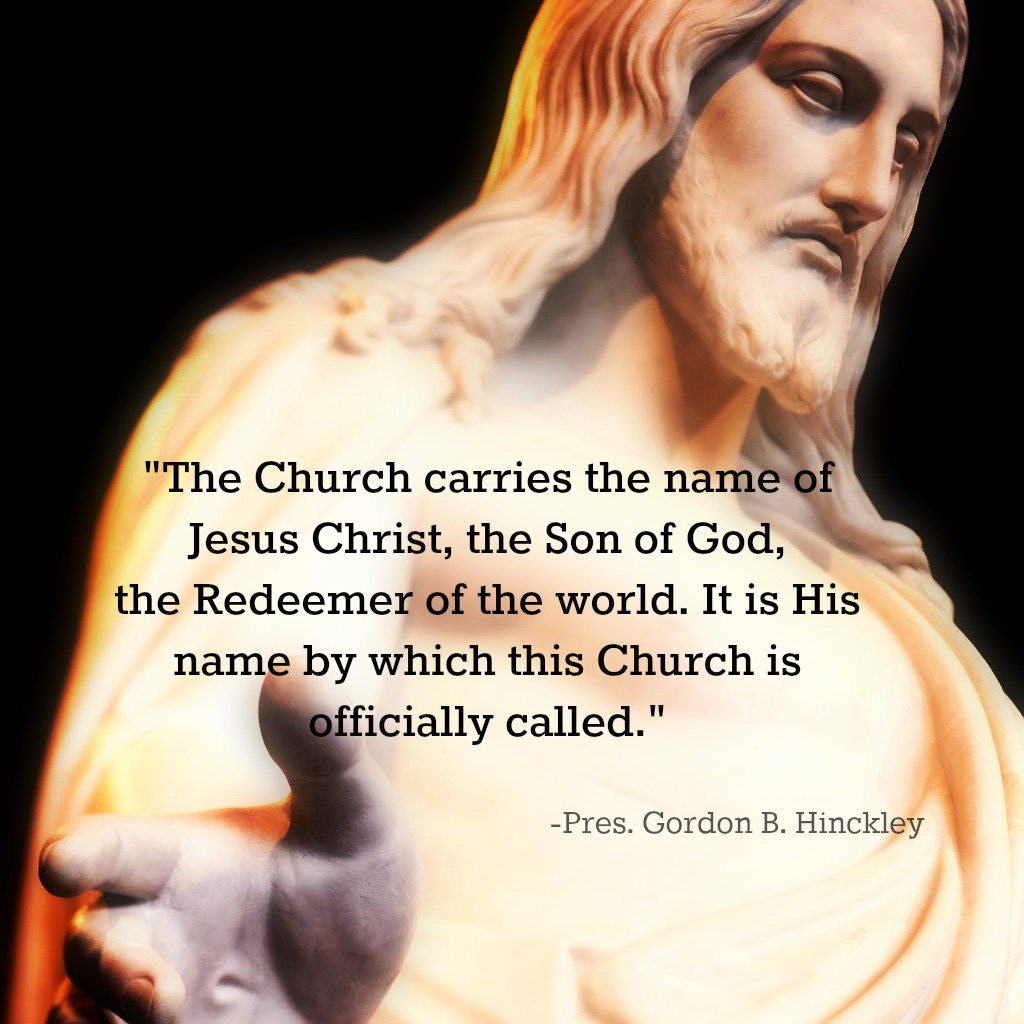Growing up, I was often asked what church I attended. Often when I said, “I am a member of The Church of Jesus Christ of Latter-day Saints,” the person would reply, “I have never heard of that church.” So then I’d say, “It’s the Mormon Church.” And most of the time the reply was, “Oh, I’ve heard of that church.” So I started answering, “I’m a Mormon.” The nickname “Mormon” stems from our belief in the Book of Mormon which is Another Testament of Jesus Christ, a companion scripture to the Bible and a record of God’s dealings with the peoples who lived in the ancient Americas. However, the term “Mormon Church” is a misnomer. This is not Mormon’s church, and, being an ancient
 prophet of God and a disciple of Jesus Christ, Mormon would not want to take any glory, fame or notoriety from the true head of the Church, Jesus Christ Himself. So although many people are more familiar with the name “Mormon Church,” that’s not the real name of the organization. It’s a nickname for The Church of Jesus Christ of Latter-day Saints—the Savior’s Church on the earth today. The teachings of Mormonism contain the fullness of the gospel of Jesus Christ.
prophet of God and a disciple of Jesus Christ, Mormon would not want to take any glory, fame or notoriety from the true head of the Church, Jesus Christ Himself. So although many people are more familiar with the name “Mormon Church,” that’s not the real name of the organization. It’s a nickname for The Church of Jesus Christ of Latter-day Saints—the Savior’s Church on the earth today. The teachings of Mormonism contain the fullness of the gospel of Jesus Christ.
Who is Mormon?
The Book of Mormon is a record of the peoples who lived in the ancient Americas and spans about 1,000 years. Mormon lived at the end of that time span. At the age of 10, Mormon was asked by Ammaron (the record keeper at the time) to prepare himself to take charge of the records of the Nephites—an ancient American civilization named after Nephi, another Book of Mormon prophet. In addition to keeping the record of his people, Mormon was a military general who led the Nephite armies from the age of 15 (Mormon 2:1-2). Elder Jeffrey R. Holland, a member of the Quorum of the Twelve Apostles (with the First Presidency, the governing body of The Church of Jesus Christ), said:
If Mormon had merely obeyed that original instruction from Ammaron it would have been challenge enough for any historian, for the story Mormon had to write was the long, terrible tale of the destruction of his people. But Mormon went beyond Ammaron’s admonition and prepared another record, abridging the entire history of his people. [1]
…After nearly a thousand years of Nephite history he was called of God to select and summarize the story of his people. That story tells in part of “peace in the land” and “all manner of miracles,” including the appearance and sermons of the resurrected Son of God.
But the story also contains the terror and depravity of that civilization gone awry, a dispensation concluding “without order and without mercy” in which women were fed on the flesh of their husbands and children were offered as sacrifice to dumb idols. In the end, Mormon’s was a painful and very lonely task. [2]
The Prophet Joseph Smith, the first president of The Church of Jesus Christ in modern times, wrote, “It was an awful responsibility to write in the name of the Lord” (Joseph Smith, Jr., History of The Church of Jesus Christ of Latter-day Saints, 1:226). And, Elder Holland said, Mormon must surely have felt the weight of that “awful responsibility.”
What is the Book of Mormon?
And now, I, Mormon, make a record of the things which I have both seen and heard, and call it the Book of Mormon (Mormon 1:1).
Prophets, both ancient and modern, have said that the Book of Mormon was written for our day. The Book of Mormon contains the fullness of the gospel of Jesus Christ. Elder L. Tom Perry, a member of the Quorum of the Twelve Apostles, said:
Why is the reading of the Book of Mormon so important to us today? It is because the major writers of the Book of Mormon fully understood that their writings were primarily for the people of a future generation rather than for the people of their own generation. Moroni wrote to our generation, “I speak unto you as if ye were present” (Mormon 8:35).
…Each time we read the book we should probably ask ourselves: “Why did these writers choose these particular stories or events to include in the record? What value are they for us today?” [3]
Elder Holland said:
Mormon does not claim his abridgement will give equal time or equal emphasis to all historical events. He was not working at a flat-rate, assessing every event to be the equivalent of every other. For example, an account of war and civil disorder covering just a little over a dozen years is given nearly sixty pages of documentation (Alma 43–62), while the most righteous period in all of Nephite history—the two hundred years of peace and purity which prevailed after Christ’s appearance in the New World—receives less than two pages of review (4 Nephi 1).
Is Mormon, the Nephite soldier, preoccupied with these tragic warring cycles that began so early and were still recurring in his own day? Or is there perhaps something in the war accounts which our generation—or a later one—must learn, prompting Mormon to stress it? [1]
Lessons from the Book of Mormon
The Book of Mormon was written by ancient prophets for our day. Mormon not only saw our day, but he lived through the destruction of his own people—times comparable to the ones we are in today. He witnessed the mistakes his people made, and through his writings we can see the results of their tragic error of turning away from God.
The Prophet Joseph Smith wrote, in the Introduction to the Book of Mormon:
I told the brethren that the Book of Mormon was the most correct of any book on earth, and the keystone of our religion, and a man would get nearer to God by abiding by its precepts, than by any other book.
Elder Perry said:
Among the lessons we learn from the Book of Mormon are the cause and effect of war and under what conditions it is justified. It tells of evils and dangers of secret
combinations, which are built up to get power and gain over the people. It tells of the reality of Satan and gives an indication of some of the methods he uses. It advises us on the proper use of wealth. It tells us of the plain and precious truths of the gospel and the reality and divinity of Jesus Christ and His atoning sacrifice for all mankind. It informs us of the gathering of the house of Israel in the last days. It tells us of the purpose and principles of missionary work. It warns us against pride, indifference, procrastination, the dangers of false traditions, hypocrisy, and unchastity.
Now it is up to us to study the Book of Mormon and learn of its principles and apply them in our lives. [3]
Christ’s Church is to Bear His Name
The nickname “Mormon” distracts from the true nature of the Church—that it is Christ’s Church. When the Savior was visiting the Nephites, He taught them—or rather, commanded them—that His Church was to bear His name. He said:
How be it my church save it be called in my name? For if a church be called in Moses’ name then it be Moses’ church; or if it be called in the name of a man then it be the church of a man; but if it be called in my name then it is my church (3 Nephi 27:8).
Thus this is not the Mormon Church—it is The Church of Jesus Christ of Latter-day Saints. It is the Lord’s Church, restored to the earth in the latter days. The Book of Mormon is the keystone of our religion because it testifies of Christ. We are honored to be called Mormons because of the greatness of the prophet Mormon and his contribution to our day. But, like any nickname, it is not the true name by which we are to be called. We are members of The Church of Jesus Christ of Latter-day Saints. We take upon ourselves Christ’s name at baptism. And it is by His name that we are known.
Additional Resources:

